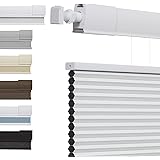In many homes, a comfortable routine often includes various tasks and habits. However, certain practices, particularly those involving a home’s electrical infrastructure, warrant closer scrutiny. The accompanying video, titled “Stop Doing This in Your Home,” serves as a crucial reminder to reassess everyday actions that might unknowingly compromise safety and efficiency.
This article delves deeper into critical residential electrical safety topics, expanding upon the general cautionary message. A thorough understanding of common electrical mistakes is presented, underscoring the potential hazards posed by improper installations, maintenance, or usage. It is essential for homeowners to be acutely aware of these pitfalls to prevent serious incidents.
Understanding Circuit Overload Risks
A prevalent issue in many older and even some newer homes is the overloading of electrical circuits. This occurs when the total current draw of devices connected to a single circuit exceeds its rated amperage capacity. The cumulative demand can quickly surpass the circuit breaker’s threshold.
Modern homes, with an increasing array of high-power electronics and appliances, frequently push existing circuits to their limits. Symptoms such as flickering lights, frequently tripped breakers, or warm outlets indicate that a circuit is under excessive strain. Ignoring these warnings significantly escalates the risk of overheating and electrical fires.
Recognizing the Telltale Signs of Overloading
Identification of an overloaded circuit is paramount for home electrical safety. Breakers that trip repeatedly are a primary indicator, signaling that the overcurrent protection device is performing its intended function. This should not be viewed as a mere inconvenience to be reset, but rather as a critical warning. Furthermore, the presence of warm outlets or switch plates, or a persistent burning odor near electrical appliances, necessitates immediate attention. These are often precursors to system failure or combustion.
Many homeowners inadvertently contribute to circuit overloading through the improper use of extension cords and power strips. These devices are intended for temporary use and should never be utilized as permanent wiring solutions. An example is the daisy-chaining of multiple power strips, which can drastically increase the load on a single wall receptacle, leading to severe fire hazards.
The Imperative of Proper Grounding and Polarity
Effective grounding and correct polarity are foundational elements of a safe electrical system. Grounding provides a safe path for fault currents to return to the earth, preventing dangerous voltage buildups on conductive surfaces. Correct polarity ensures that power flows through the intended path in an appliance, mitigating shock risks.
Improper grounding, or a complete lack thereof, significantly elevates the risk of electrocution. In such scenarios, a short circuit or fault can energize metal casings of appliances or other conductive elements, rendering them lethal to touch. The National Electrical Code (NEC) mandates specific grounding requirements for this reason, ensuring a robust safety mechanism is in place.
Addressing Common Grounding and Polarity Defects
Numerous residential properties, particularly those constructed before modern electrical codes were fully adopted, may exhibit deficiencies in grounding. Two-prong outlets, for instance, inherently lack an equipment grounding conductor, leaving devices plugged into them unprotected. Though conversion to three-prong outlets might be considered, a proper upgrade necessitates running a dedicated grounding wire back to the service panel, not merely replacing the receptacle cover plate.
Polarity issues, where the hot and neutral wires are reversed in a receptacle, are another serious concern. While an appliance may still function, its internal safety mechanisms could be compromised. This condition allows the appliance chassis to remain energized even when the switch is off, creating a latent shock hazard. Regular inspections, especially for older installations, are crucial to identify and rectify such subtle yet dangerous defects in residential electrical safety.
Common DIY Wiring Errors and Their Consequences
The allure of cost savings often motivates homeowners to undertake electrical work themselves. However, electrical systems are complex, and improper DIY wiring can lead to catastrophic outcomes. Common mistakes range from using incorrect wire gauges to faulty connections and non-compliant installations.
Incorrect wire sizing for a given circuit’s amperage rating is a frequent error. Smaller gauge wires used on higher amperage circuits can overheat, leading to insulation breakdown and fire. Similarly, loose connections in junction boxes or at device terminals generate resistance, which manifests as heat, another significant fire risk that impacts home electrical safety.
The Dangers of Unlicensed Electrical Work
Installations that do not adhere to the National Electrical Code (NEC) pose inherent dangers and can invalidate home insurance policies. The NEC is a comprehensive set of standards designed to safeguard persons and property from electrical hazards. Ignorance of these codes is not an excuse for non-compliance, and often leads to unsafe modifications. For example, the improper installation of Arc-Fault Circuit Interrupters (AFCIs) or Ground-Fault Circuit Interrupters (GFCIs) can render critical safety devices ineffective. AFCIs detect dangerous arc faults which can cause fires, while GFCIs protect against severe electrical shock. Their correct implementation is non-negotiable for modern electrical safety.
Additionally, improper splicing techniques or leaving exposed conductors are severe violations of safety standards. These can create direct shock hazards or short circuits, which pose immediate risks. The absence of proper wire nuts or insulation tape on connections is a clear indication of substandard work that should never be present in a residential electrical system.
Recognizing and Addressing Electrical Warning Signs
Electrical systems rarely fail without providing some form of warning. Homeowners must be vigilant in observing these signals, as prompt action can prevent serious incidents. Any unusual observation should be investigated rather than dismissed.
These signs can include visual cues, such as scorch marks around outlets or light switches. Auditory warnings, such as buzzing or sizzling sounds from outlets or the breaker panel, are also critical. Olfactory indicators, particularly the smell of burning plastic or ozone, must be taken very seriously, as these often point to overheating components within the electrical system.
Responding to Abnormal Electrical Behavior
A proactive approach to electrical issues is highly advised. When a circuit breaker trips repeatedly, it is not simply an annoyance; it is an indication of an underlying problem, potentially an overload or a short circuit. Resetting the breaker without investigating the cause is a hazardous practice. Similarly, any shock received from an appliance or switch, even a minor one, signals a serious grounding or wiring fault that must be immediately addressed.
Additionally, dimming or flickering lights, particularly when a major appliance starts up, can indicate an overloaded circuit or inadequate wiring capacity. These symptoms suggest that the electrical supply is being strained. When such warning signs manifest, professional diagnosis is invariably warranted. Ignoring these subtle yet persistent indicators significantly increases the potential for fire, equipment damage, or personal injury, underscoring the importance of vigilance in maintaining home electrical safety.











